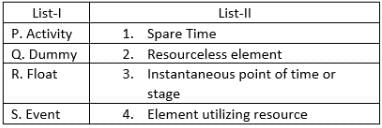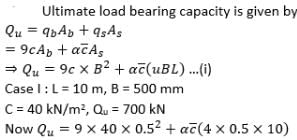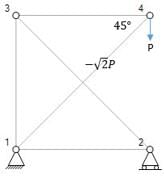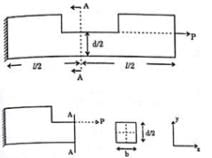Gate Mock Test Civil Engineering (CE) - Civil Engineering (CE) MCQ
30 Questions MCQ Test GATE Civil Engineering (CE) 2025 Mock Test Series - Gate Mock Test Civil Engineering (CE)
Natural numbers from 1 to 999 are written in a random manner on a board. Each time 2 numbers are chosen and their product is written on the board after erasing the 2 numbers. After 999 such operations, which of the following is likely to be true?
| 1 Crore+ students have signed up on EduRev. Have you? Download the App |
Assume that equal number of people are born each day of the year. If the century under consideration is the 20th century, what is the percentage of people who are born on 29th February?
[Assume no deaths occur during the period under consideration].
[Assume no deaths occur during the period under consideration].
Four distinct amounts i.e. Rs. 3000, Rs. 4000, Rs. 6000 and Rs. 7000 are put on deposit on simple interest @ 4%, 6%, 7.5% and 8% per annum - each amount having been put on deposit at a different rate of interest. It is also known that the highest principal amount has not been put on deposit at the lowest rate of interest and vice versa; likewise It is also known that the highest principal amount has not been put on deposit at the highest rate of interest and the lowest principal amount has not been put on deposit at the lowest rate of interest. If the highest principal amount does not earn maximum interest, what is the rate of interest (in %) for Rs.7000
P and Q are distinct real numbers such that 4 < P < 5 and -9 < Q < -8. Which of the following has the least possible value?
At what time between 6 a.m. and 7 a.m will the minute hand and hour hand of a clock make an angle closest to 60°?
Raja and joseph start from their hostel. The distance covered by Raja in 3 steps is identical to the distance covered by joseph in 4 steps while the time taken by both of them to cover a step is identical. At a particular instance of time when both of them had covered 800 steps each, the distance between them was 300 m. Now, raja cuts down the length of his step by 1/3rd and Joseph increase the length of his step by 20% with time taken to cover a step by both remaining identical. Both will be at the same spot at the same time in _________ more steps.
In the following question, a sentence is given with a blank to be filled in with appropriate word(s). Four alternatives are suggested for the blank. Choose the correct alternative out of the four. Wider international attention can be expected _______ continue, potentially exacerbating political polarization at every step.
Direction: In the following question consists of two statements Assertion(A) and Reason(R). You have to read the statements carefully and select the answers to these questions using the options below.
Assertion (A): a material is incompressible if its poissions ratio is 0.5
Reason(R): the bulk modulus K is related to modulus of elasticity E and to poissons ratio as per well known relationship.
The ground water is pumped through an aquifer having an area of 150 Hectares which has a porosity of 0.4. Specific retention of the medium is 0.25. Find the change in the ground water storage when the water table drops from 15 m to 25 m.
Let  The only correct statement about the matrix A is
The only correct statement about the matrix A is
The ultimate load capacity of a 10 m long concrete pile of square cross section 500 mm × 500 mm driven into a homogenous clay layer having undrained cohesion value of 40 kPa is 700 kN. If the cross section of the pile is reduced to 250 mm × 250 mm and the length of the pile is increased to 20m, the ultimate load capacity will be
The result of Vee-Bee test is expressed in terms of:
A catchment having an area of 150 km2 has the ø index 0.3 cm/hr. The base flow at the outlet is 10m3/s. One hour unit hydrograph of the catchment area is triangular in shape with a time base of 20 hours. The peak ordinate occurs at 8 hours.
The peak ordinate of the unit hydrograph (m3/s/cm) is.
A particular section of steel shaft is subjected to maximum bending stress of 160 MPa and a maximum shear stress equal to 60 MPa. The yield point in tension of the material is 400 MPa. If maximum shear stress theory is used, the FOS will be _____________.
Match List-I (Item) with List-II (Features) and select the correct codes

Consider a small length of a beam subjected to simple bending. It has two sections AB and CD normal to the axis of the beam N-N. The amount by which the layer increases or decreases in length,
In a two-dimensional stress analysis, the state of stress at a point is shown below. If σ = 120 MPa and τ = 70 MPa, then σx and σy are respectively. (AB=4, BC=3, AC=5)

A steel rod of circular cross-section is to carry a tensile load P = 150 kN. The allowable working stress in shear for the rod is τallowable = 55 MPA. The required diameter for the rod is
Match List I and List II and select the correct answer using the codes given below the lists.

The displacement of joint 4 relative to joint 1 along the direction 1-4 of the truss given below. Axial rigidity of all member is AE.

The maximum tensile stress at the section X–X shown in the figure below is

The variation of rigidity factor for a tyre pressure is stated as:
Using IRC: 37 - 1984 “Guidelines for the Design of Flexible Pavements” and the following data, choose the total thickness of the pavement.
No. of commercial vehicles when construction is completed= 2723 veh/day
Annual growth rate of the traffic = 5.0%
Design life of the pavement = 10 years
Vehicle damage factor = 2.4
CBE value of the subgrade soil = 5%
Data for 5% CBR value

Each of the following items consists of two statements, one labelled as the ‘Statement (I)’ and the other as ‘Statement (II)’. Examine these two statements carefully and select the answers to these items using the codes below:
Statement (I): A moving hydraulic jump is called a surge.
Statement (II): The travel of a wave is faster in the upper portion than in the lower portion in case of positive surges.
A rigid body shown in the Fig(a) has a mass of 10 kg. It rotates with a uniform angular velocity 'ω' A balancing mass of 20 kg is attached as shown in Fig(b) . The percentage increase in mass moment of inertia as a result of this addition is

The characteristic compressive strength of concrete required in a project is 25 MPa and standard deviation in the observed compressive strength expected at site is 4 MPa. The average compressive strength of cubes tested at different water-cement (w/c) ratios using the same material as is used for the project is given in the table.

The water-cement ratio (in percent, round off to the lower integer) to be used in the mix is________
|
31 docs|280 tests
|
|
31 docs|280 tests
|


 is equal to
is equal to







 is
is


































